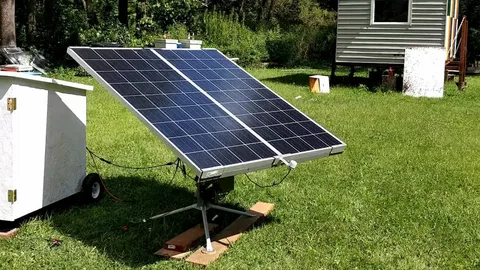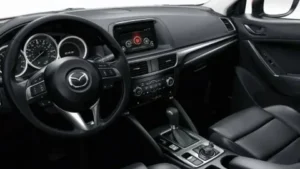In recent years, there has been a surge in demand for stand-alone solar system kits, especially as people seek sustainable, self-sufficient energy sources for homes, cabins, RVs, and boats. Unlike traditional grid-tied solar systems, stand-alone solar systems offer complete energy independence by providing off-grid power solutions without relying on the main electricity grid. This reduces utility bills and enhances energy security in remote or rural areas with limited grid access.
Stand alone solar system kits have emerged as a practical, environmentally friendly solution for those wanting reliable power wherever they go. This comprehensive guide cover everything you need to know about these kits, including their components, types, costs, and the benefits of off-grid solar energy.
What is a Stand-Alone Solar System Kit?
A stand-alone solar system kit, also known as an off-grid solar system, is a self-contained solar power system designed to generate, store, and deliver electricity without relying on the main grid. Here’s a quick overview of its components:
- Solar Panels: These capture sunlight and convert it into electricity.
- Charge Controller: This regulates the voltage and current coming from the solar panels to ensure the safe charging of the battery bank.
- Battery Bank: Stores the electricity generated by the solar panels, providing power even when the sun isn’t shining.
- Inverter: Converts the stored DC power from the battery into AC power used by standard household appliances.
Stand-alone solar kits offer everything needed for a basic off-grid power setup, making them ideal for remote cabins, RVs, and other off-grid applications where power reliability and independence are essential.
Benefits of Stand Alone Solar Kits
Stand Alone solar kits offer numerous advantages over traditional power sources, especially in off-grid settings. Here’s a closer look at some of their most significant benefits:
Energy Independence
With a stand-alone solar system, you no longer depend on the grid or utility companies. This independence allows you to generate and use your power, which is ideal for remote or rural areas with limited grid access.
Environmentally Friendly
Solar power is a clean, renewable energy source. Using stand-alone solar system kits reduces your carbon footprint and contributes to a greener, more sustainable planet.
Cost Savings
While the initial investment in a solar kit can be substantial, the system pays off over time. With no monthly electricity bills, off-grid solar power offers significant long-term savings, especially in areas where utility costs are high.
Reliability During Outages
Stand-alone systems continue to provide power even during grid outages, making them ideal for areas prone to blackouts or natural disasters.
These benefits make stand-alone solar systems a smart choice for anyone looking to save on energy costs, reduce environmental impact, and ensure reliable power.
Types of Stand Alone Solar Power Kits
Stand Alone solar power kits come in various configurations to meet different energy needs and application requirements. Here are the main types of off-grid solar kits:
Basic Solar Kits
Basic solar kits are designed for small energy needs and typically include solar panels, a charge controller, and a small battery. These kits are ideal for RVs, boats, or small cabins where only a few essential appliances need power.
Mid-Range Solar Kits
Mid-range kits are suitable for powering more substantial loads and often include additional batteries and larger inverters. These systems are popular for off-grid homes, small farms, and workshops where moderate power is needed.
Complete Off-Grid Kits
Complete off-grid kits are designed for larger homes or locations with higher energy needs. These kits often include multiple solar panels, large battery banks, high-capacity inverters, and backup generators. They’re perfect for those who need a reliable, all-in-one solution for complete off-grid living.
Choosing the right type of kit depends on your specific power requirements, location, and budget. Each type is customizable to provide a tailored solution that meets unique energy needs.
How Do Stand-Alone Solar System Kits Work?
The functionality of a stand-alone solar system kit lies in its components working together to capture, store, and deliver solar energy. Here’s a simplified breakdown of the process:
- Solar Panels Capture Sunlight: The panels capture sunlight and convert it into direct current (DC) electricity.
- Charge Controller Regulates Power: The charge controller regulates the DC power from the panels and sends it to the battery bank while preventing overcharging.
- Battery Bank Stores Power: The battery bank stores the electricity the panels generate when the sun isn’t shining.
- Inverter Converts DC to AC: The inverter converts the stored DC power into alternating current (AC) power, making it usable by common household appliances.
With a well-sized solar system kit, you can have consistent, reliable energy for your off-grid needs, even when sunlight is limited.
Factors to Consider When Choosing a Stand-Alone Solar System Kit
Selecting the right stand-alone solar system kit requires careful consideration of various factors. Here’s what to keep in mind:
Power Needs
Calculate your energy requirements to determine the appropriate size of your solar system kit. Consider the wattage of each appliance and how long you plan to use it daily. This will help you estimate the total watt-hours you need daily.
Battery Capacity
Battery storage is crucial for off-grid systems, as it allows you to store energy at night or during cloudy days. Choose a battery bank with sufficient capacity to meet your energy needs without frequent recharging.
Location and Sunlight Availability
The effectiveness of your solar kit depends on sunlight availability. Calculate the average sunlight hours in your area to determine the size and number of solar panels required.
Budget
Solar kits range widely in price. While larger systems offer more power, they come with higher upfront costs. Balancing your budget with your power needs ensures a cost-effective solution.
These factors ensure your stand-alone solar system kit efficiently and reliably meets your energy requirements.
Stand-Alone Solar System Kits Price: What to Expect
The price of stand-alone solar system kits varies based on size, components, and power output. Here’s a general overview of price ranges for different kits:
Basic Solar Kits
- Ideal for Small-Scale Applications: Basic solar kits are designed for compact setups, such as RVs, small cabins, or single rooms. These kits provide just enough power for essential devices and lighting, making them suitable for minimal energy requirements.
- Easy to Install and Use: These kits are typically simple to set up, often including solar panels, a basic charge controller, and wiring. They are excellent for users seeking an entry-level solar solution with limited energy needs.
Mid-Range Solar Kits
- Suitable for Medium-Sized Homes: Mid-range kits are well-suited for medium-sized homes or off-grid installations with moderate energy demands. They offer higher power output and often include multiple solar panels, a larger inverter, and enhanced battery storage.
- Good for Off-Grid or Backup Power: These kits can provide consistent power for critical appliances and are ideal for those looking to supplement grid power or establish a reliable off-grid setup.
Complete Off-Grid Kits
- High-Capacity Power Solution: Complete off-grid kits are designed for larger homes or installations requiring continuous off-grid power. They often include high-capacity inverters, extensive battery banks, and advanced charge controllers.
- Supports Full Home Power Needs: These kits provide sufficient energy for all household demands, from lighting and appliances to heating systems. They are best suited for users looking to achieve full energy independence or to power larger properties with high energy consumption.
While these are general price ranges, actual costs can vary based on factors like brand, quality, and additional components.
Installation of Stand Alone Solar Panel Kits
Installing stand alone solar panel kits involves several steps. While some smaller kits are suitable for DIY installation, larger systems may require professional assistance. Here’s a quick overview of the installation process:
Determine Location
Choose a sunny location for the solar panels, ideally free from shade and facing south (in the northern hemisphere) for optimal sunlight exposure.
Mount Panels
Securely mount the solar panels to a sturdy surface, such as a rooftop or ground mount. Proper mounting is essential to withstand weather conditions and maximize sunlight exposure.
Connect the Charge Controller and Battery Bank
Connect the solar panels to the charge controller, which will manage the flow of electricity to the battery bank and prevent overcharging.
Set Up Inverter
Install the inverter near the battery bank, connecting it to the batteries and the AC electrical system to convert stored power for household use.
Professional installation can ensure your system operates safely and efficiently, especially for larger or more complex setups.
Maintenance Tips for Stand Alone Solar Kits Australia
Stand Alone solar kits Australia require regular maintenance to operate efficiently. Here’s a checklist to keep your system in top condition:
- Solar Panel Cleaning: Clean the solar panels every few months to remove dirt and debris and ensure optimal sunlight capture.
- Battery Maintenance: Check battery fluid levels (if applicable) and inspect for corrosion or damage. Replace batteries as needed based on manufacturer recommendations.
- System Inspection: Inspect wiring, connections, and components for wear or damage. Address any issues promptly to prevent system failure.
Proper maintenance will prolong the life of your stand-alone solar system kit and maximize its efficiency, providing reliable energy for years to come.
Are Stand-Alone Solar System Kits Right for You?
Stand-alone solar systems are suitable for various applications but may only be ideal for some. Here’s who can benefit most from a stand-alone solar system:
- Remote Properties: Homes, cabins, or farms far from the electrical grid are perfect candidates for off-grid solar systems.
- Eco-Conscious Homeowners: Stand-alone solar systems are an excellent solution for homeowners who want to reduce their carbon footprint and embrace renewable energy.
- Frequent Travelers and Campers: People who frequently travel with RVs or enjoy camping can use portable solar kits for reliable power.
- Emergency Preparedness: Stand-alone solar systems offer backup power during emergencies, ensuring essential devices and appliances continue to run.
Whether for long-term living or as a backup solution, stand-alone solar systems provide the freedom and security of self-sustained energy.
Conclusion
Stand-alone solar system kits are an effective, environmentally-friendly solution for off-grid power needs. From small RV kits to comprehensive off-grid setups for homes, these kits offer a range of options to suit different energy requirements and budgets. With benefits like energy independence, reliability, and reduced environmental impact, stand-alone solar systems are an excellent choice for those looking to embrace renewable energy and reduce their reliance on traditional power sources.
Investing in a stand-alone solar system kit is a long-term decision that pays off in energy savings and peace of mind. Whether you live off-grid, prepare for emergencies, or just want to minimize your carbon footprint, a stand-alone solar system provides a sustainable and practical power solution for any location.
FAQs
How much power do I need from a stand-alone solar system?
The power you need depends on the appliances you plan to use and your daily energy consumption. List all appliances and their wattages, then calculate your daily usage to size your system correctly.
Can stand-alone solar system kits power an entire home?
Large stand-alone kits are designed to power an entire home, including lights, appliances, and other electrical systems. Choose a kit that matches your home’s energy needs and includes a robust battery bank for storage.
Are stand-alone solar kits easy to install?
Some smaller kits are designed for DIY installation, but larger, more complex systems may require professional installation to ensure safety and efficiency.
Do I need a permit to install a stand-alone solar system?
Permit requirements vary by location. In rural or remote areas, permits may not be necessary, but it’s always best to check with local authorities before installation.
What’s the lifespan of a stand-alone solar system kit?
With proper maintenance, solar panels can last 25-30 years. Depending on the type and usage, battery banks may need replacement every 5-15 years.




